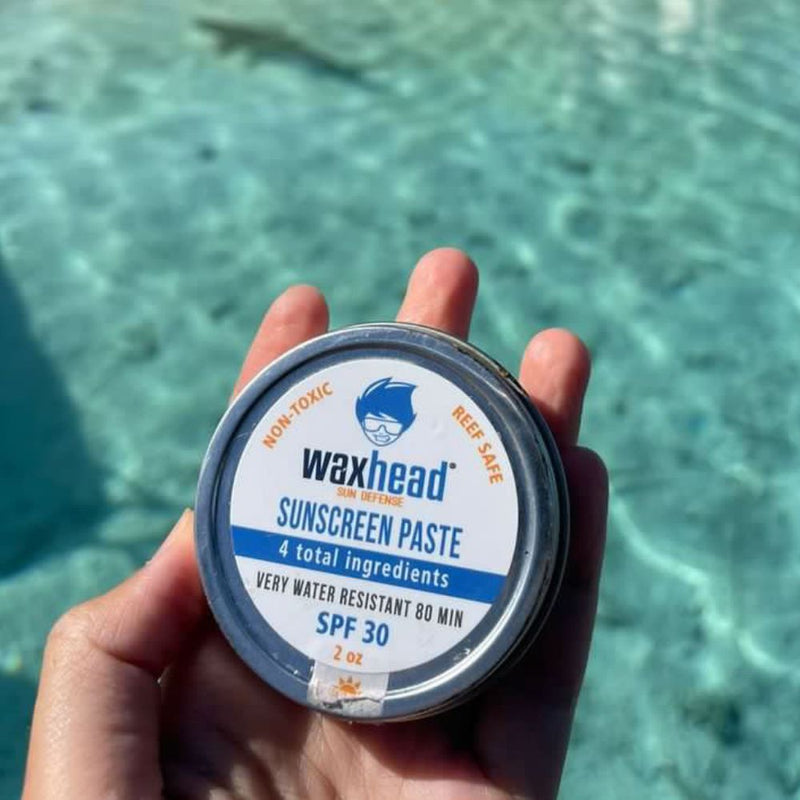Is your sunscreen safe?
As a healthy mom, you’re great at covering your kids with sunscreen, but the sunscreen you use may actually be causing skin cancer and other long term damage. In most big brand sunscreens you’ll find some pretty nasty toxins, which are ok at preventing sunburn, but do much more harm than good in stopping deep tissue damage. Choosing the right sunscreen can be confusing, so we created this list of the most dangerous sunscreen chemicals to avoid to help you make safe choices before you head outdoors.
Sunscreen Chemicals to Avoid
1. Oxybenzone
Penetrates skin and enters the bloodstream, attacks DNA, produces free radicals, and promotes cancer cell formation. It’s linked to breast cancer, melanoma, endometriosis, hormone disruptions, eczema, allergic skin reactions, and lower birth weights.
2. Octinoxate
Mimics estrogen and disrupts thyroid function. Detected in human urine, blood and breast milk, it encourages premature aging by producing free radicals.
3. Homosalate
Disrupts hormones and enhances the body’s absorption of pesticides.
4. Octisalate
Increases the amount of other ingredients passing through skin. It disrupts hormones, forms toxic metabolites, and enhances penetration of toxic herbicides.
5. Octocrylene
Is readily absorbed by skin and accumulates within the body. Quick to biodegrade and bioaccumulate, it produces free radicals and may be responsible for reproductive toxicity.
6. Parabens
Mimics estrogen and can induce allergic reactions and hormone disruptions along with developmental and reproductive toxicity. They’re linked to infertility, abnormal sexual organ development, obesity, asthma, allergies, tumors of the uterus and digestive tract, along with breast cancer.
7. Paba
Increases allergic sensitivity and encourages cancerous cell growth by releasing free radicals when exposed to light. Most sunscreens no longer use Paba, and those marketing themselves as Paba free tend to use other just-as-dangerous chemicals and toxins.
8. Retinyl Palmitate* (Vitamin A / Palmitic acid compound)
Defends against UV aging BUT on sun exposed skin produces reactive oxygen that destroys cells. Linked to cardiovascular disease, it speeds development of skin tumors and lesions. For expecting mothers, it’s toxic to a developing fetus, with associated links to brain swelling and cellular changes along with developmental and organ toxicity.
* Also known as retinal palmitate, retinyl acetate, retinyl linoleate and retinol.
9. Fragrance
The list of scent-purpose chemicals is long, with the actual chemical names rarely specified, more often grouped as ‘artificial fragrance’ or simply ‘fragrance.’ These various chemicals are linked to cancer, nervous system disorders, allergies, and birth defects.
In Closing
So you shouldn’t use sunscreens with any of these ingredients, but what SHOULD you use? If you want to avoid all the guesswork, Waxhead Sun Defense makes the safest most effective sunscreens on the planet.
NEXT STEPS
1. Know your ingredients — Flip over your sunscreen and read the ingredients. We want everyone to know what good ingredients are, regardless of whether they use our products or not. Your health is worth it.
2. Buy safe sunscreen — Waxhead is dedicated to using only the healthiest, safest, most effective ingredients in our sunscreens. Shop Safe Sunscreen here.
3. Teach a friend — If you know someone who might still be buying sunscreen with questionable ingredients, please share this post with him/her.





























